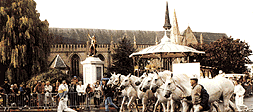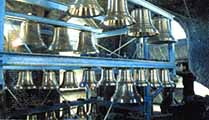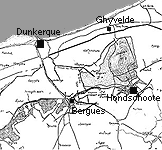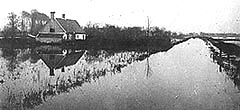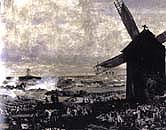Hondschoote

 Noord-Meulen windmill - may date from 1127 - a witness to past battles. |
Wealthy medieval cloth town It was one of the largest towns in Flanders, and its wealth showed in public buildings like the fine big church. |
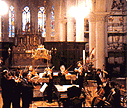 A concert in front of one of the area’s famous altar-pieces  Town Hall - built in1558 while the town prospered as part of Spanish Flanders |
|
|
Using the marshes as
defence Meanwhile the Spanish opened the sluice-gates to flood
the whole area, in an attempt to defend their hold on
Dunkerque - a tactic repeated in other wars, including the
First World War.
|
|
|
|
|
|
|
|
|
|
The battle of Hondschoote in 1793 was a key event in saving the French Republic after the Revolution. Most of Europe's kings and emperors feared the idea of the common people siezing power, and rushed to invade France and crush the ideas of "Liberty, brotherhood, equality" before the revolution could spread to their countries. The English king sent an army via Flanders to capture Dunkerque as key invasion port. They were joined by troops from Hanover and Austrians from neighbouring Austrian Flanders. The foreign invaders were beaten by a French volunteer army in a fierce patriotic battle near Hondeschoote, where the windmill was a look-out post and first-aid station. |
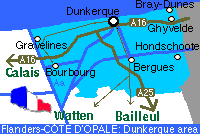 Click on places for more information
|
|||||
|
Places
to visit |
|||||
|
Background
Information: |
|||||
 QUICK TOUR round Flanders Côte d'Opale, starting with Dunkerque Port Museum... |
|||||
|
|
|
|
|
|
|
|
|
